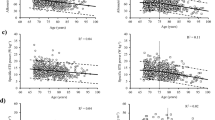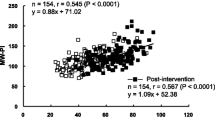Abstract
Background and aims: The sit to stand (STS) movement is commonly performed in daily life, and can be used as an indicator of activity. This study aimed to quantify the usual frequency and distribution of the STS movement performed by older adults in both home and rehabilitation settings. Methods: Three groups of older adults were recruited; healthy older adults living in the community, older adults living in the community attending rehabilitation services at a day hospital, and frail older patients in a rehabilitation ward. Participants wore an activity monitor, which reported posture continuously for a week. The number of STS movements was the primary outcome measure, and mean values of daily STS frequency were reported. The pattern of activity was investigated using median values of STS hourly rate. Results: Healthy older adults living in the community performed significantly more STS movements per day (n=20; 71±25) than either older adults attending a day hospital (n=20; 57±23) or frail older patients in a rehabilitation ward (n=30; 36±16). For all participants, the hourly rate of STS movements ranged from zero to 48, although the median hourly rate was two (healthy older adults) and one (both rehabilitation groups). Conclusion: Measurement of the number of STS movements performed over the course of a week in three groups of older adults, demonstrated significant differences in daily number of STS movements and in the hourly pattern between the groups. Activity patterns can provide additional information on clinically relevant aspects of physical activity and function to daily averages.
Similar content being viewed by others
References
Dall PM, Kerr A. Frequency of the sit to stand task: an observational study of free-living adults. Appl Erg 2010; 41: 58–61.
Janssen WGM, Bussmann HBJ, Stam HJ. Determinants of the sit-to-stand movement: a review. Phys Ther 2002; 82: 866–79.
Alexander NB, Schultz AB, Warwick DN. Rising from a chair: effects of age and functional ability on performance biomechanics. J Gerontol 1991; 46: M91–8.
Schot PK, Knutzen KM, Poole SM, Mrotek LA. Sit-to-stand performance of older adults following strength training. Res Q Exerc Sport 2003; 74: 1–8.
Bohannon RW, Barreca SR, Shove ME, Lambert C, Masters LM, Sigouin CS. Documentation of daily sit-to-stands performed by community dwelling adults. Physiother Theory Practice 2008; 24: 437–42.
van den Berg Emons H, Bussmann J, Balk A, Keijzer-Oster D, Stam H. Level of activities associated with mobility during everyday life in patients with chronic congestive heart failure as measured with an “activity monitor”. Phys Ther 2001; 81: 1502–11.
de Bruin ED, Najafi B, Murer K, Uebelhart D, Aminian K. Quantification of everyday motor function in a geriatric population. J Rehabil Res Dev 2007; 44: 417–28.
de Groot IB, Bussmann JB, Stam HJ, Verhaar JA. Actual everyday physical activity in patients with end-stage hip or knee osteoarthritis compared with healthy controls. Osteoarthritis Cartilage 2008; 16: 436–42.
Egerton T, Brauer SG. Temporal characteristics of habitual physical activity periods among older adults. J Phys Activity Health 2009; 6: 644–50.
de Groot IB, Bussmann HJ, Stam HJ, Verhaar JA. Small increase of actual physical activity 6 months after total hip or knee arthroplasty. Clin Orthop Rel Res 2008; 466: 2201–8.
Britton E, Harris N, Turton A. An exploratory randomized controlled trial of assisted practice for improving sit-to-stand in stroke patients in the hospital setting. Clin Rehabil 2008; 22: 458–86.
Egerton T, Maxwell DJ, Granat MH. Mobility activity of stroke patients during inpatient rehabilitation. Hong Kong Physiother J 2006; 24: 8–15.
Grant PM, Granat MH, Thow MK Maclaren WM. Analysing free-living physical activity of older adults in different environments using body-worn activity monitors. J Aging Phys Activity 2010; 18: 171–84.
Smith R. Validation and reliability of the Elderly Mobility Scale. Physiother 1994; 80: 744–7.
Hodkinson HM. Evaluation of a mental test score for assessment of mental impairment in the elderly. Age Ageing 1972; 1: 233–8.
Grant PM, Ryan CG, Tigbe WW, Granat MH. The validation of a novel activity monitor in the measurement of posture and motion during everyday activities. Br J Sports Med 2006; 40: 992–7.
Grant PM, Dall PM, Mitchell SL, Granat MH. Activity monitor accuracy in measuring step number and cadence in communitydwelling older adults. J Aging Phys Activity 2008; 16: 201–14.
Liu-Ambrose T, Donaldson MG, Ahamed Y et al. Otago homebased strength and balance retraining improves executive functioning in older fallers: a randomized controlled trial. J Am Geriatr Soc 2008; 56: 1821–30.
Rosie J, Taylor D. Sit-to-stand as home exercise for mobility-limited adults over 80 years of age — GrandStand System™ may keep you standing? Age Ageing 2007; 36: 555–62.
Hamilton MT, Hamilton DG, Zderic TW. Role of low energy expenditure and sitting in obesity, metabolic syndrome, type 2 diabetes, and cardiovascular disease. Diabetes 2007; 56: 2655–67.
Katzmarzyk PT, Church TS, Craig CL, Bouchard C. Sitting time and mortality from all causes, cardiovascular disease, and cancer. Med Sci Sports Exerc 2009; 41: 998–1005.
Healy GN, Dunstan DW, Salmon J et al. Breaks in sedentary time. Diabetes Care 2008; 31: 661–6.
Trost SG, McIver KL, Pate RR. Conducting accelerometer-based activity assessments in field-based research. Med Sci Sports Exerc 2005; 37: S531–43.
Matthews CE, Ainsworth BE, Thompson RW, Bassett DR. Sources of variance in daily physical activity levels as measured by an accelerometer. Med Sci Sports Exerc 2002; 34: 1376–81.
Author information
Authors and Affiliations
Corresponding author
Rights and permissions
About this article
Cite this article
Grant, P.M., Dall, P.M. & Kerr, A. Daily and hourly frequency of the sit to stand movement in older adults: a comparison of day hospital, rehabilitation ward and community living groups. Aging Clin Exp Res 23, 437–444 (2011). https://doi.org/10.1007/BF03325239
Received:
Accepted:
Published:
Issue Date:
DOI: https://doi.org/10.1007/BF03325239




